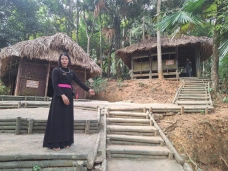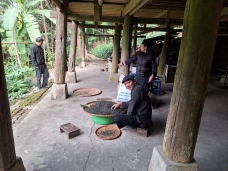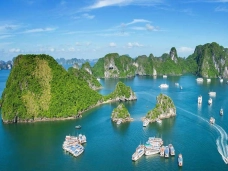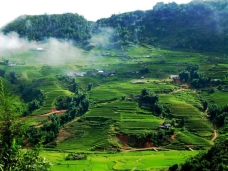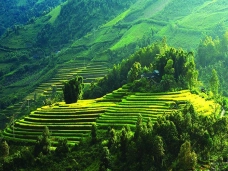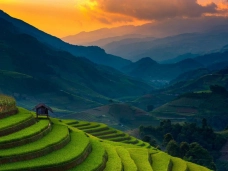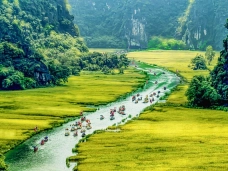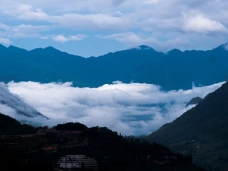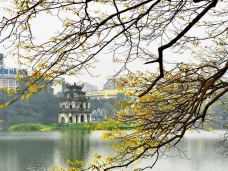Thanh Hóa Province – Culture and History
22-03-2024 16:27
Location
Highlight Image
Thanh Hóa, a province in the North Central region of Vietnam, is one of the largest provinces in the country by both area and population. As of 2021, Thanh Hóa covers an area of about 11,133.4 km², making it one of the largest provinces in Vietnam. With a population estimated at over 3.6 million people, Thanh Hóa boasts a diverse community in terms of culture and history.
History
The history of Thanh Hóa can be traced back thousands of years, starting from prehistoric times with the remnants of the Đông Sơn culture, renowned for its bronze drums. This area was also part of the Champa Kingdom before becoming a part of Đại Việt under the Lý, Trần, and Lê dynasties. In the feudal era, Thanh Hóa was the birthplace of many Vietnamese kings, including Lê Lợi, who initiated the Lam Sơn uprising against the Ming invaders, leading to the establishment of the Early Lê Dynasty. Thanh Hóa is known as "the land of heroes" for having produced many generals and national heroes.
Culture
This land is a melting pot of various ethnic groups, including the Kinh (Viet), Muong, Thai, and other minority groups, contributing to the diversity in customs, festivals, and traditional arts.
Festivals: Thanh Hóa is famous for its traditional festivals such as the Đền Hoằng Festival, Làng Sen Festival, and Đền Sòng Festival. These festivals are not only occasions for the locals to express their reverence for ancestors but also opportunities to showcase their community spirit and cultural identity.
Traditional Arts: Thanh Hóa also possesses a rich array of folk arts such as Xoan singing, bamboo dancing, and ethnic dances of the Thai and Muong people.
Cuisine: The cuisine of Thanh Hóa is varied and rich, featuring specialties such as Thanh Hóa fermented pork roll, Thanh Hóa steamed rolled rice pancakes, and grilled Lang fish. Each dish reflects not only unique cooking methods but also provides a deep insight into local ingredients and culinary traditions.
Destinations
Sầm Sơn Beach is one of the most famous beaches in Northern Vietnam, attracting tourists with its long white sandy shores and clear blue waters, along with high-end resort and entertainment services. The beach also features many historical and cultural relics.
Bến En National Park, covering over 16,000 hectares, is known as the "Halong Bay on land" of Thanh Hóa, famous for its majestic mountains and clear lakes. It is an ideal destination for those who love outdoor activities such as hiking, camping, and nature exploration.
Pù Luông Nature Reserve is a natural reserve with a spectacular mountainous landscape and lush valleys, making it a paradise for trekking enthusiasts and those seeking peace away from the urban bustle.
Hồ Dynasty Citadel - a World Cultural Heritage site, is one of the oldest limestone architectures in Vietnam. It is an ideal place to learn about the glorious history of the nation through its feudal dynasties.
Múa Caves is famous for its 500-step staircase leading up to a mountain peak from where one can view the entire Tam Cốc area. Múa Caves is a popular spot for stunning panoramic photos and is one of the most popular check-in points in Thanh Hóa.
Hải Hòa and Hải Thịnh Beaches, these beaches remain relatively unspoiled and less commercialized, suitable for those looking for a quiet place to relax and unwind.
Cẩm Lương Fish Stream is a unique destination in Thanh Hóa, where thousands of fish in the stream are believed to be incarnations of deities. This provides a unique cultural experience not found elsewhere.
Thanh Hóa, rich in historical tradition and culture, converges various cultures, having been the battleground for uprisings and the home to national heroes. With its rich landscapes and heritage, Thanh Hóa remains an attractive destination for both domestic and international tourists.
Similar destination
14-04-2024
Hạ Long - A World Natural Heritage
22-03-2024
Moc Chau, Son La Province
22-03-2024
Mai châu - Hòa Bình
22-03-2024
Dien Bien - History and Culture
22-03-2024
Ninh Bình – History and Culture
22-03-2024
Sapa - People and Nature
22-03-2024






